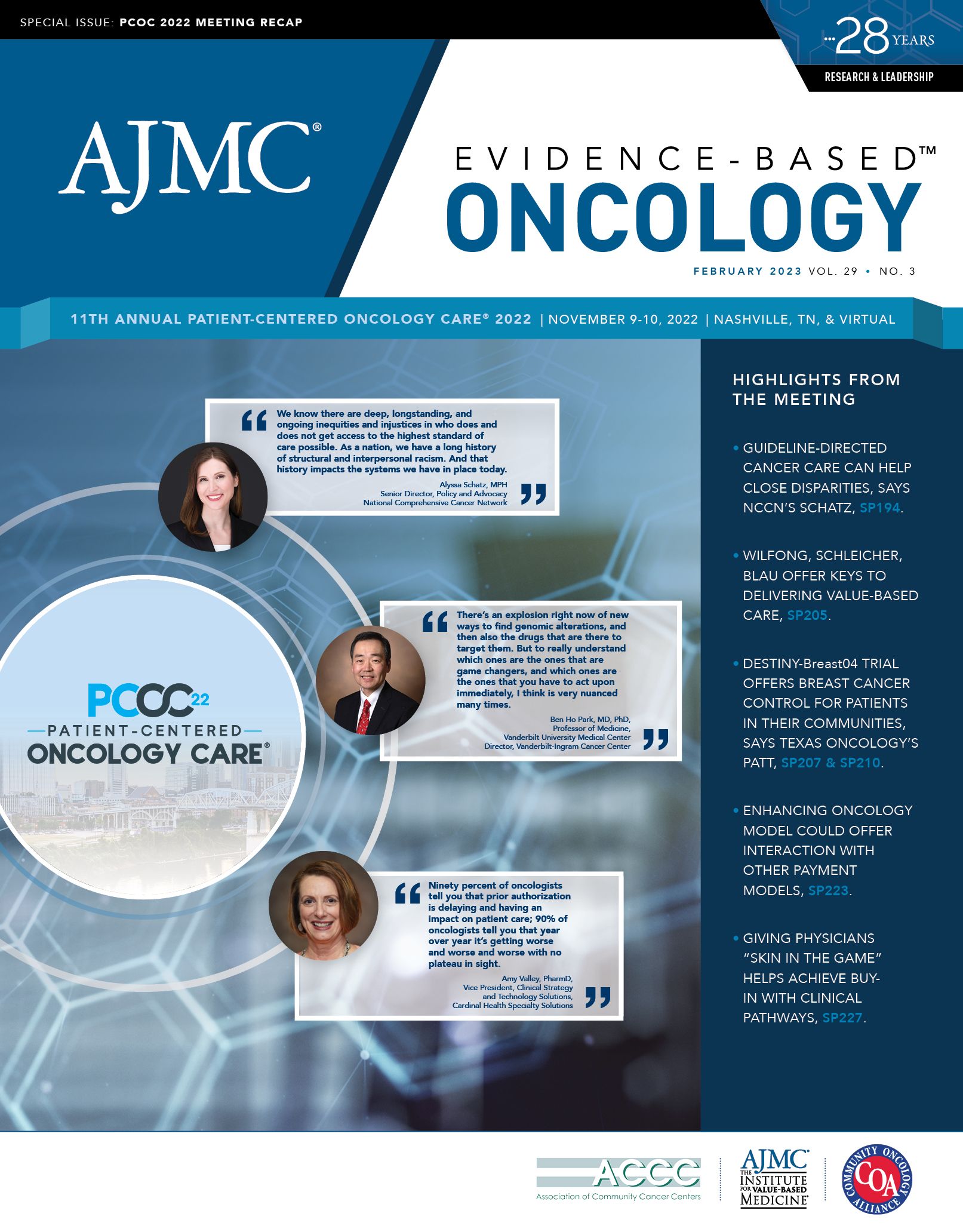- Center on Health Equity & Access
- Clinical
- Health Care Cost
- Health Care Delivery
- Insurance
- Policy
- Technology
- Value-Based Care
Meet Ishani Ganguli, MD, MPH, Who Came to Managed Care Research in “an Unconventional Way”
Ishani Ganguli, MD, MPH, an assistant professor of medicine at Harvard Medical School, health services researcher, former journalist, and primary care physician in the Division of General Internal Medicine at Brigham and Women’s Hospital in Boston, Massachusetts, received the 2022 Seema S. Sonnad Emerging Leader in Managed Care Research Award at The American Journal of Managed Care® (AJMC®) 11th Annual Patient-Centered Oncology Care® conference, held November 9-10, 2022, in Nashville, Tennessee. The award was established in honor of Seema S. Sonnad, PhD, a former associate editor of AJMC®, who died in May 2015.
Here, Ganguli discusses her research and how she got her start in her career. This interview with Evidence-Based Oncology™ (EBO) has been lighted edited for clarity and length.
EBO: Can you discuss your research in managed care?
Ganguli: The work I do is broadly related to the value of ambulatory care. I’m really interested in making outpatient care of higher value for patients and narrowing the gap between what patients expect from the health care system and what we’re actually able to provide.
There’s a couple of different ways that I tend to look at this. One is through thinking about low-value care. In other words, [what are] services that clinicians order that have little to no benefit for patients with a potential for harm? Not just what are those services, but also what are the downstream consequences or cascades that can follow from those low-value services? Some of my work has involved using claims data, national survey data, as well as electronic health record data to measure these cascades. Right now, we’re running a clinical trial to try to reduce low-value care using a behavioral economic intervention. So, that’s a big part of my work.
Another piece that I’m really interested in is understanding how we pay for and deliver primary care and ambulatory care more generally, and thinking about the influence of new payment and delivery models on outcomes for patients, as well as for equity. Gender equity in medicine is another big area for me.
EBO: What made you interested in managed care research?
Ganguli: I came into research in a bit of an unconventional way. When I was in high school and college, I wrote for the newspaper, and I was a journalist. The summer after my junior year of college, I had this amazing opportunity to intern for the ABC News Medical Unit, and I got really interested in medical journalism. I started out writing about basic sciences and medicine. I took a year off between college and medical school to write full time, and all my free time in [medical] school, I wrote as a journalist. And as my clinical training progressed, I started to observe more and more the challenges in in how we deliver care to patients and how we pay for care. So, what I was writing about those challenges, essentially, was health services research. My entry point into the research came really from observing these challenges as a journalist, and then I had some opportunity during residency to try some research; then after my first research job after residency and a fellowship is when I really jumped into that work.
EBO: What was your reaction to receiving the 2022 Seema S. Sonnad Emerging Leader in Managed Care Research Award?
Ganguli: I am incredibly honored to receive this award. I want to thank my mentor, Dr Vinny Arora, who nominated me and is such a role model to me. And I never had the privilege of meeting Dr Sonnad. But from everything I’ve heard and read about her as a person, as a mentor, as a researcher, as a human being, she seemed like such an amazing person. I’m just so honored to be to receive the support in her name, and I hope to be able to pay it forward and carry on [her] legacy.
EBO: What other research are you a part of now or looking forward to working on?
Ganguli: One thing I’ve been thinking a lot about is how the decisions we make as clinicians impact patients and how we don’t always appreciate or think through all of the different impacts that those decisions have on patients. For me, one new area of research is thinking about something called the ambulatory care burden, or contact days, which is this idea that every time we ask patients to come in for a lab test or for a visit or to be in the hospital for some time, it’s both access to care but also a burden to patients often and that can be challenging, especially if it’s hard for a patient or their caregivers to come in to seek care. So, some of my work has been thinking about ways of making that easier on patients—for example, through telemedicine, which of course has become much more common since the pandemic started—and other ways of trying to make care more efficient and easier on patients, so that we, as a health care system, can honor the trade-offs and the additional burdens that patients have outside of spending their time with us.

Trends in Hospital Pricing for Vulnerable Emergency Department Users, 2021-2023
December 4th 2025Self-pay emergency department prices rose significantly from 2021 to 2023, especially at for-profit and system-affiliated hospitals, highlighting growing affordability challenges for uninsured and underinsured patients.
Read More
Integrated Care for Chronic Conditions: A Randomized Care Management Trial
December 3rd 2025The authors sought to understand the differential impact of payer-led community-based care management approaches on stakeholder-oriented outcomes for publicly insured adults with multiple chronic conditions.
Read More
